HMS Thruster - Landing Ship Tank.
Background to her design and construction and Operational
Photographs
 HM LST Thruster was a
large landing ship, not unlike a modern RoRo (roll on roll off ) ferry, except
she only had a bow ramp for embarking and disembarking vehicles and she had a
flat bottom.
HM LST Thruster was a
large landing ship, not unlike a modern RoRo (roll on roll off ) ferry, except
she only had a bow ramp for embarking and disembarking vehicles and she had a
flat bottom.
Thruster was built by Harland
and Wolf, Belfast, Northern Ireland and launched on September 24th, 1942,
being commissioned in the Royal Navy on January 28th, 1943. She later took part
in the invasions of Sicily, Salerno, Anzio and Southern France.
These rare photographs are of the ship, her crew, the actions she was involved in and the ships she encountered on her travels.
Background
In early June, 1940, 330,000
servicemen from the Allied Expeditionary Force were evacuated from
the beaches of Dunkirk. It would take 4 years to reorganise, retrain and
re-equip land, sea and air forces to work together as a unified force in what
would be the largest amphibious invasion in history.
There would be no friendly ports
to deliver the hundreds of thousands of men and all their equipment and supplies. All
ports would be very
heavily defended by the enemy and primed for demolition to prevent them falling
into Allied hands. A new approach to offensive operations against the enemy was required, which was
breathtaking in its scale and complexity.
An invading force of overwhelming
strength would come from the sea with the objective of securing a
beachhead on enemy occupied
territory. Successive
waves of 'follow on' and 'build up' forces would then land to maintain the
Allied advance inland. Ships, craft and
barges, capable of landing directly onto unimproved beaches in less populated
areas, would be required on a scale never seen before or since. This was the
main task given to what became the Combined Operations Command working in close
cooperation with the Chiefs of Staff.
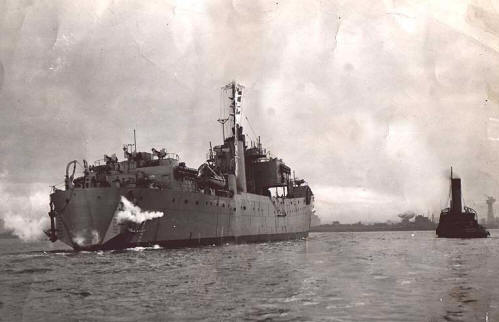 During
the 4 years from Dunkirk to D Day, the Command would also pursue other strategies designed to harass
the enemy along the entire Atlantic coast from Norway to southern France, using
special units that became known as the Commandos, as well as taking the fight to
the enemy in large scale landings in North Africa, Sicily, Italy and the wider Mediterranean.
During
the 4 years from Dunkirk to D Day, the Command would also pursue other strategies designed to harass
the enemy along the entire Atlantic coast from Norway to southern France, using
special units that became known as the Commandos, as well as taking the fight to
the enemy in large scale landings in North Africa, Sicily, Italy and the wider Mediterranean.
Traditional warships needed deep water in which to operate,
so new vessels would be designed and manufactured
in their thousands to meet the perceived needs.
As invasion plans and training programmes
developed, the composition and requirements of the
invading force became clearer. Many specialised types of landing craft were
designed, built and modified, which collectively would deliver the invading
force and their transport, tanks, equipment, munitions and supplies onto the beaches,
while others would provide fighting support during the initial assault phase and
provide maintenance, medical,
repair facilities etc. afterwards.
By the time of the Normandy landings in June 1944, the range
of landing craft designed to meet the needs of a fighting force of several hundred thousand
troops, as well as those for small scale, clandestine Commando surveillance and
offensive operations, was in place. In broad
terms they served the following
purposes;
-
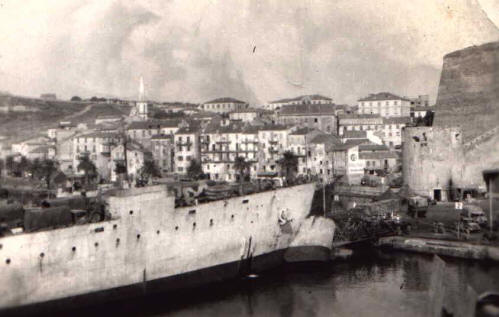 Ferries
for transporting troops, their equipment, supplies and ammunition to the landing
beaches from southern England (in the case of Normandy) or from larger supply
ships anchored off the beaches and then to re-supply them over the longer term with food, water, fuel,
replacement vehicles and equipment, ammunition and general supplies. These
landing craft
ranged in size from Landing Ship Tank (LSTs) of over 200 feet in length to
Amphibians of around 30 feet in length.
Ferries
for transporting troops, their equipment, supplies and ammunition to the landing
beaches from southern England (in the case of Normandy) or from larger supply
ships anchored off the beaches and then to re-supply them over the longer term with food, water, fuel,
replacement vehicles and equipment, ammunition and general supplies. These
landing craft
ranged in size from Landing Ship Tank (LSTs) of over 200 feet in length to
Amphibians of around 30 feet in length.
[Photo; Loading at Naples].
-
Fighting craft
fitted out for offensive and defensive operations with rockets, mortars, smoke,
anti-aircraft guns and heavy calibre guns.
-
Ancillary
craft which provided services such as radar, communications and
intelligence gathering, large scale catering, hospitals and repair services for
vehicles, vessels and equipment,
-
Light Raiding Craft, the most famous of which
were the canoes used by the Cockleshell Heroes.
With few exceptions, they had flat bottoms to allow
them to operate in shallow waters near and on the beaches. This made the smaller
of these craft quite difficult to manoeuvre
and control in choppy seas, strong winds and tidal races; and the ride was far from smooth, as
the sentiments expressed in this "tongue in cheek" ditty,
attests.
How Landing Craft Were Named
Landing
was the generic term to describe all these shallow draft
vessels. This was followed by a broad category of vessel, such as
Ships, Craft and Barges and then by the purpose of the vessel, such
as assault, personnel, tank and rocket. Where there were special
features or the size was worthy of acknowledgement in the title, these were added in brackets, such as
(large), (small) or (ramped). Furthermore,
where variants or 'Marks' were produced, these were acknowledged by a figure in a bracket.
Thus names such as: Landing Craft Infantry (Large) or LCI (L); Landing Craft Mechanised, Mark III or LCM (3);
Landing Craft Flak or LCF; Landing Barge Kitchen or LBK; Landing Craft Assault
or LCA and Landing Ship Tank or LST emerged. Each vessel was followed by a
unique number for identification purposes.
LST Thruster

Malta

Piraeus Harbour Nov 1944

Stern view with LST in wake

Freetown, S. Africa, Y gun deck.

LCP being lowered away at Piraeus
The Crew

Class W8 HMS Royal Arthur Skegness, 8/41. Len Thacker 4th
from left rear rank.

The crew of HM LST Thruster 4th February 1945.

Left to right, John Lodge, Len Thacker & Den Cruthley.

Jock Broom, Ken Hollings, Eric Taylor & Dick Beatley.
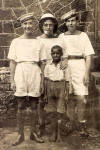
Freetown 1942. Len Thacker, Jack Leathersich & Algy Hobber.
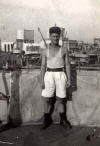
Ginger Birkenshaw with HM LST Thruster at Naples.

Ginger Birkenshaw and Albert Taylor.

Left to right, Frank Moss, Harry Reeve, Len Hacker & Jack Pyle, May 5th
1944.
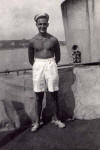
 Eric Taylor.
Eric Taylor.

Dick Beatley, Ginger Birkenshaw, Albert Taylor
and Dick Anderton.

Dick Anderton.

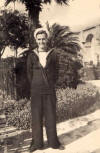
Len Thacker, May
5th 1944, in Malta.

Signalman, Norman Roberts at the 10 inch Aldis lamp
in Porto Vecchio.

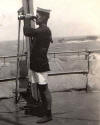
Signalman, Norman Roberts, with Aldis Lamp
in Naples keeping lookout.

Flag deck tea party Albert, Frank, Len Hacker & Coops.

Awnings rigged at Bombay.
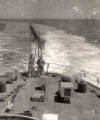
Under The White Ensign, Hary Dunn and Harry Reid.
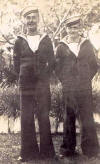
Len Hacker & Tich Meddings, Durban, 1942.
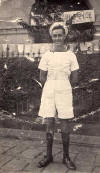
December 31st, 1943, Malta. Len Thacker.

On the beach at Porto Vecchio, June 1944.

At Rest Camp, Dec 1944.
The Action

Naples, Jan 1944, American troops bound for Anzio.

Anzio, Jan 1944.
 Anzio, Jan 1944.
Anzio, Jan 1944.

Anzio, Jan 1944, during a raid.

Anzio, Jan 1944, Fires on the beach.

Anzio, Jan 1944, near misses on LST.

Approaching Salonika.

HM LST Bruiser at Green Beach, Southern France, Aug 1944. Op Dragoon.

HM LST Bruiser beaching at St Raphael
August 1944. Operation Dragoon.

D Day, Southern France,
August 1944. Operation Dragoon.

HM LST Bruiser at Malta.

HM LST Bruiser off Corsica.

HM LST Bruiser at Malta.

French Creek, Malta.

Operation Dragoon, San Raphael, Southern France,
August 1944.


Salonika views.
Other Ships

Town Class Cruiser HMS Birmingham.

Town Class
Light
Cruiser HMS Sheffield.

B Class Destroyer HMS Boreas.

King George V Class Battleship HMS Anson.

HMS Birmingham at Simonstown.

USS Marblehead alongside HMS Glasgow
at Simonstown.

F Class Destroyer
HMS Faulknor - escort to Anzio.

Leander Class Frigate Minerva at Porto Vecchio.

Town Class Cruiser HMS Newcastle.

Omaha
Class
Light
Cruiser USS Marblehead.

Light Cruiser USS Marblehead at Simonstown.

Battle Cruiser HMS Renown 1942.
Correspondence
I thought you might be interested to know that
HMS Thruster was, at
one time, earmarked for conversion to a Fighter Direction Ship. Fighter
Direction Ships were designed to perform a similar role to the
Fighter Direction Tenders but were based on different
vessels. FDTs were converted Landing Ship Tanks (LSTs) while FDSs were conversions (1943) of HMS Ulster Queen and
HMS Palomares. They were merchantmen originally classed as auxiliary AA Ships for
convoy escort duties. They were later joined by
HMS Stuart Prince
In mid 1944, as the focus of the amphibious aspects of WW2 moved from the
west to the far east, the Admiralty decided that long range Fighter
Direction Ships with a speed of 16 knots, and capable of operating with
assault escort carriers, were required for assault operations in the
Pacific. Three LSTs Mk1s, HMLSTs Boxer, Bruiser and Thruster, were identified as suitable for conversion but only
H.M.S.
Boxer was completed. However, she never saw action in the far east since
Japan surrendered as the vessel entered the Suez Canal.
Phill Jones
Further Reading
On this
website there are around 50 accounts of
landing craft training and
operations and
landing craft
training establishments.
There are around 300 books
listed on our 'Combined Operations Books' page which can be purchased on-line
from the Advanced Book Exchange (ABE) whose search banner checks the shelves
of thousands of book shops world-wide. Type in or copy and paste the title of
your choice or use the 'keyword' box for book suggestions. There's no
obligation to buy, no registration and no passwords. Click
'Books' for more
information.
Visit our
Index page where you'll find links to numerous pages on Landing Craft and
major landings.
Acknowledgments






























































